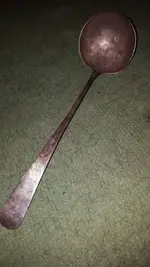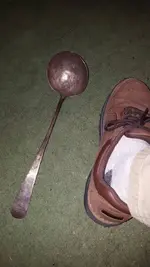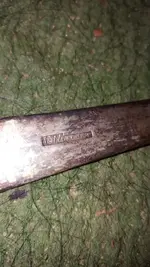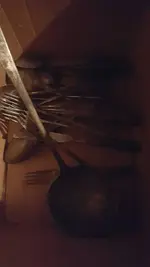Just tidying up some blasts from the past (including some very ancient ones), largely for the benefit of anyone searching the site for information.
Cool spoon. It will be coin silver (nominal .900 fine), but I hope it didn’t end up in the melting pot.
The mark is listed in Currier’s “Marks of Early American Silversmiths” [published 1938], but in the “unidentified” section, with no dates or biographical details:
There’s a passing reference to the maker in a thread on the ‘Silver Forum’, saying that ‘I. Wescoat’ was from St. Croix, which is now Part of the US Virgin Islands in the Caribbean but at the time this spoon was made was known as the Danish West Indies. One other thing to bear in mind is that the letters ‘I’ and ‘J’ were regarded as interchangeable in these times, with ‘J’ often not being used at all, so whoever this guy was he might well have been a ‘John’ rather than an ‘Isaac’ (or whatever).
As well as having a high population of enslaved Africans working in the sugar and cotton plantations, the island group had smaller numbers of European colonists and what were called ‘mustees’ – the sons of mixed race mothers and white fathers who received proper educations and were able to pursue careers of their own.
Among the other known silversmiths of St. Croix were George Thurland (born c.1780), listed in the 1855 census of the island as a widower with the occupation of goldsmith & silversmith and Peter Bentzon (born c.1783) who began a silversmithing apprenticeship in 1799. The latter was a mustee who had been sent to Philadelphia at the age of eight to receive a better education, completed his apprenticeship in 1806 and then relocated to St. Croix to start his own business before returning to Philadelphia in 1848.
I would think it’s a rare spoon from a historically interesting maker who may have worked in St. Croix or in the United States, or both at different times. Probably not as rare as Bentzon marks, for which fewer than thirty-six of his pieces are known to have survived, most of which are teaspoons.
One other interesting thing to note is the stylistic similarity to the mark of John Welch (signed as 'I. Welch'), a silversmith, watch and clock maker in Fincastle, Virginia (c.1811-1827 and in partnership with Charles Aunspaugh as Welch & Aunspaugh c.1822-1827). Looks to be more than a coincidence to me.







